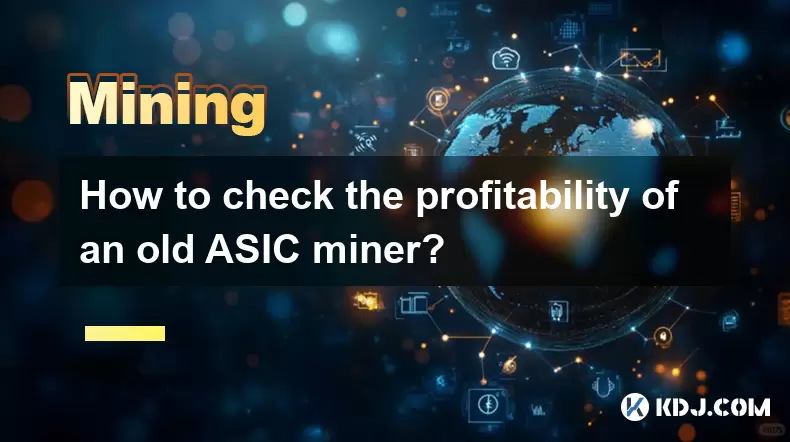-
 Bitcoin
Bitcoin $121,713.8152
3.06% -
 Ethereum
Ethereum $3,041.6437
2.42% -
 XRP
XRP $2.9499
5.12% -
 Tether USDt
Tether USDt $1.0000
-0.02% -
 BNB
BNB $704.1034
1.75% -
 Solana
Solana $166.7523
2.91% -
 USDC
USDC $0.9999
0.00% -
 Dogecoin
Dogecoin $0.2052
2.90% -
 TRON
TRON $0.3011
-0.47% -
 Cardano
Cardano $0.7461
1.42% -
 Hyperliquid
Hyperliquid $48.3650
1.12% -
 Stellar
Stellar $0.4548
3.52% -
 Sui
Sui $3.9527
14.50% -
 Chainlink
Chainlink $16.3300
5.87% -
 Bitcoin Cash
Bitcoin Cash $511.8016
1.25% -
 Hedera
Hedera $0.2395
1.40% -
 Avalanche
Avalanche $21.6526
2.06% -
 UNUS SED LEO
UNUS SED LEO $9.0073
-0.23% -
 Shiba Inu
Shiba Inu $0.0...01369
2.61% -
 Toncoin
Toncoin $3.0335
0.66% -
 Litecoin
Litecoin $96.6206
1.72% -
 Monero
Monero $355.1673
5.35% -
 Polkadot
Polkadot $4.0839
2.47% -
 Uniswap
Uniswap $9.3282
9.72% -
 Dai
Dai $0.9997
-0.01% -
 Ethena USDe
Ethena USDe $1.0004
-0.04% -
 Pepe
Pepe $0.0...01248
1.07% -
 Bitget Token
Bitget Token $4.4642
2.68% -
 Aave
Aave $325.0626
6.81% -
 Bittensor
Bittensor $418.1482
6.22%
How to check the profitability of an old ASIC miner?
"Old ASIC miners can still mine, but profitability depends on hash rate, power use, electricity costs, and crypto prices."
Jul 13, 2025 at 12:22 am

Understanding ASIC Miner Profitability
ASIC (Application-Specific Integrated Circuit) miners are specialized hardware designed to mine specific cryptocurrencies like Bitcoin or Litecoin. Over time, these devices can become outdated due to advancements in technology and changes in network difficulty. To determine the profitability of an old ASIC miner, you need to evaluate several key factors including hash rate, power consumption, current cryptocurrency prices, mining difficulty, and electricity costs.
Step-by-Step: Gathering Essential Information
Before diving into calculations, gather all relevant data about your ASIC miner model and its specifications. This includes:
- Hash rate: Measured in TH/s (terahashes per second) for Bitcoin or GH/s for altcoins.
- Power consumption: Usually measured in watts (W) or watts per terahash (W/TH).
- Electricity cost: The price you pay per kilowatt-hour (kWh) for running the miner.
You should also check the current block reward and difficulty level of the blockchain you're mining on. These values change over time and directly impact how much your miner earns daily.
Calculating Daily Earnings
To estimate daily earnings from your ASIC miner, use a mining profitability calculator such as those found on websites like WhatToMine or CryptoCompare. Input the following:
- Hash rate
- Power consumption
- Electricity cost
- Cryptocurrency being mined
These calculators will provide an estimated daily income in both fiat currency (like USD) and cryptocurrency. Keep in mind that this is an approximation and actual earnings may vary based on network congestion, pool fees, and block confirmation times.
Analyzing Power Efficiency and Cost Breakdown
One of the most critical aspects of determining profitability is understanding power efficiency. Older ASIC miners tend to have lower hash rates per watt, meaning they consume more electricity for less output. For example, a miner with a power efficiency of 30 W/TH is significantly less efficient than a newer one at 25 W/TH.
To calculate the daily electricity cost, multiply:
Power usage (in kW) × Electricity cost per kWh × 24 hours
For instance, if your miner uses 1,200 watts (1.2 kW) and your electricity rate is $0.10/kWh, then:
1.2 kW × $0.10 × 24 = $2.88 per day
Compare this figure with the daily mining earnings to assess net profit.
Factoring in Mining Pool Fees and Downtime
Most miners join mining pools to increase their chances of earning consistent rewards. However, these pools typically charge a fee between 1% and 4% of your earnings. Make sure to account for this deduction when calculating real-world profitability.
Additionally, consider downtime caused by maintenance, internet issues, or hardware failure. If your miner is older, it might experience higher failure rates or require frequent repairs, which can eat into profits. Always factor in potential repair costs, cooling requirements, and noise complaints if operating at home.
Evaluating Long-Term Viability
While short-term profitability might look promising, older ASIC miners often struggle to remain profitable as blockchain difficulty increases. Newer models with better efficiency enter the market regularly, raising the overall network hashrate and making it harder for older machines to compete.
If the break-even point (the time it takes for earnings to cover the initial investment and operational costs) is too long — say, more than 6 months — it may not be worth continuing to operate the device unless you're mining for educational purposes or personal interest.
Frequently Asked Questions
Q: Can I still mine with an ASIC miner that's 5 years old?
Yes, but profitability depends on the hash rate, power consumption, and current network conditions. Some older models may barely break even or even lose money depending on electricity rates.
Q: Is it worth repairing an old ASIC miner?
It depends on repair costs versus expected future earnings. If fixing the unit costs more than what it can earn in a month, it’s usually not worth repairing.
Q: How does the price of Bitcoin affect ASIC miner profitability?
A higher BTC price increases miner revenue, improving profitability. Conversely, a drop in price can render even efficient miners unprofitable overnight.
Q: Should I switch to mining a different cryptocurrency with my old ASIC miner?
Some older ASICs support multiple algorithms, allowing you to mine alternative coins. However, switching may not always yield better results due to market volatility and lower demand for certain coins.
Disclaimer:info@kdj.com
The information provided is not trading advice. kdj.com does not assume any responsibility for any investments made based on the information provided in this article. Cryptocurrencies are highly volatile and it is highly recommended that you invest with caution after thorough research!
If you believe that the content used on this website infringes your copyright, please contact us immediately (info@kdj.com) and we will delete it promptly.
- Token Buybacks & Altcoin Developers: Navigating Market Tokens in the Wild West
- 2025-07-15 04:30:12
- Bitcoin Blasts Past $120K: How US Policy is Fueling the Crypto Craze
- 2025-07-15 04:30:12
- TradeOS: Revolutionizing Global Trade with Infrastructure and Innovation
- 2025-07-15 02:50:12
- Bitcoin Price Prediction: Is $130K-$200K Next?
- 2025-07-15 03:50:12
- Token Unlocks and Crypto Grabs: What's the Deal?
- 2025-07-15 03:50:12
- BlockDAG Scores Big with Seattle Sports Deals & TIA/SOL Buzz!
- 2025-07-15 03:55:12
Related knowledge

How are crypto mining profits taxed?
Jul 14,2025 at 12:28am
Understanding Cryptocurrency Mining and TaxationCryptocurrency mining involves validating transactions on a blockchain network and earning rewards in ...

How to keep a mining rig cool
Jul 12,2025 at 01:42pm
Understanding the Importance of Cooling in Mining RigsCryptocurrency mining is an intensive process that places heavy demand on hardware components, p...

How much does it cost to start crypto mining?
Jul 13,2025 at 12:22am
Understanding the Basic Costs of Crypto MiningStarting crypto mining involves several upfront and ongoing expenses. The primary costs include hardware...

What is the most profitable crypto to mine?
Jul 13,2025 at 07:00am
Understanding Mining Profitability in CryptocurrencyWhen evaluating the most profitable crypto to mine, it's essential to consider several factors tha...

What do I need to start mining crypto?
Jul 13,2025 at 12:28am
Understanding the Basics of Crypto MiningCrypto mining is the process by which transactions are verified and added to a blockchain, and new coins are ...

How does crypto mining work?
Jul 13,2025 at 11:01am
Understanding the Basics of Crypto MiningCrypto mining is the process through which new cryptocurrency coins are introduced into circulation and trans...

How are crypto mining profits taxed?
Jul 14,2025 at 12:28am
Understanding Cryptocurrency Mining and TaxationCryptocurrency mining involves validating transactions on a blockchain network and earning rewards in ...

How to keep a mining rig cool
Jul 12,2025 at 01:42pm
Understanding the Importance of Cooling in Mining RigsCryptocurrency mining is an intensive process that places heavy demand on hardware components, p...

How much does it cost to start crypto mining?
Jul 13,2025 at 12:22am
Understanding the Basic Costs of Crypto MiningStarting crypto mining involves several upfront and ongoing expenses. The primary costs include hardware...

What is the most profitable crypto to mine?
Jul 13,2025 at 07:00am
Understanding Mining Profitability in CryptocurrencyWhen evaluating the most profitable crypto to mine, it's essential to consider several factors tha...

What do I need to start mining crypto?
Jul 13,2025 at 12:28am
Understanding the Basics of Crypto MiningCrypto mining is the process by which transactions are verified and added to a blockchain, and new coins are ...

How does crypto mining work?
Jul 13,2025 at 11:01am
Understanding the Basics of Crypto MiningCrypto mining is the process through which new cryptocurrency coins are introduced into circulation and trans...
See all articles

























































































